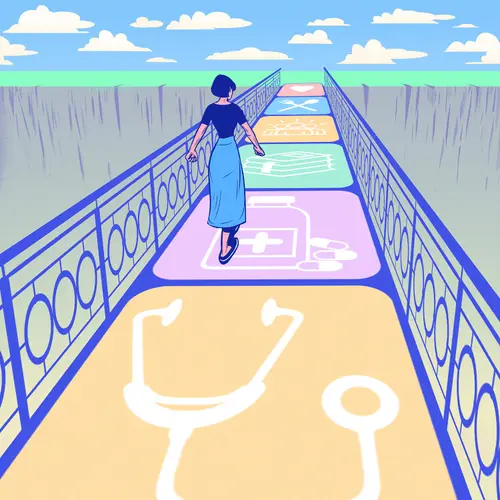Your spinal cord needs a steady blood supply to function properly. This helps it send nerve impulses to the rest of your body. The impulses are like signals or messages that help you with vital yet basic body movements like moving your arms and legs, and making sure your organs like your intestines work as they should.
But if the blood flow to your spine is cut off or something blocks it, it won’t be able to get the oxygen and nutrients necessary to do its job. This can lead to what doctors call a “spinal stroke” or a “spinal cord infarction.”
What Is a Spinal Stroke?
When the spine doesn't get nutrients and oxygen-rich blood supplies due to a blood clot (ischemic spinal stroke) or a bleed (hemorrhagic spinal stroke), it can damage or kill spinal tissues and cells. While it’s rare and makes up only about 1% of stroke cases, it’s dangerous and life-threatening.
If you don’t get medical help right away, a spinal stroke can cause life-altering health problems, like permanent paralysis, or sometimes lead to death.
What Are the Symptoms of a Spinal Stroke?
After you’ve had a stroke, you can have symptoms in minutes or a few hours. And they tend to get worse as time passes. The symptoms may vary, depending on which part of your spine they affect.
Spinal stroke symptoms can include:
- Neck pain
- Arm pain
- Muscle weakness in your legs or hands
- Numbness, burning, or tingling sensations
- Muscle spasms
- Tightness or pain in your chest
- Loss of temperature sensation of objects or water
- A sudden need to pee or poop (incontinence)
- Full or partial paralysis
If you or your loved one notices these symptoms, get medical help right away. Call 911 or go to the nearest hospital as soon as possible.
What Causes a Spinal Stroke?
You’re more likely to have a spinal stroke when the walls of your arteries – which carry blood away from your heart – become thick or too narrow for steady blood flow to your spinal cord. Doctors call this “arteriosclerosis.”
But more specifically, spinal strokes are often caused by a subtype of arteriosclerosis called “atheromatosis.” This causes plaque buildup or deposits inside your arteries.
It can also happen if you have a sudden bleed (hemorrhage) that often comes from high blood pressure or a burst spinal aneurysm – a bulging in your blood vessels that’s typically wider than half of the vessel’s usual width.
You’re also at risk for a spinal stroke if you have an abnormal connection between your spinal arteries and veins. This is known as a spinal vascular malformation.
Less common causes for a spinal stroke can include:
- Stomach surgery
- Spinal tumors
- Nerve damage
- Spinal compression
- Tangled blood vessels
- Spinal tuberculosis
- Cauda equina syndrome (CES)
What Are the Risk Factors for a Spinal Stroke?
Certain health conditions and lifestyle habits can up your odds of a spinal stroke, such as:
- High blood pressure (hypertension)
- High cholesterol
- Smoking tobacco
- Diabetes
- Heart-related conditions
- Having obesity
- Lack of physical exercise
- Drinking too many alcoholic beverages
How Are Spinal Strokes Diagnosed?
To confirm the symptoms of a spinal stroke, you’ll need to go to the hospital right away. Once you're there, an emergency room doctor or a neurologist, a doctor who specializes in brain, spinal cord, and nerve issues, will take your medical history and do a detailed physical exam to avoid a misdiagnosis.
For an accurate diagnosis, your doctor will:
- Check for any serious spinal cord symptoms that developed in the last 12 hours.
- Order imaging tests like an MRI to have a closer look at your spine.
- Check for inflammation in your spinal fluid.
- Run more tests to rule out other possible causes for numbness, muscle weakness, or paralysis. This can include a slipped disk, cancerous tumors, or an infected abscess, all in the spine.
What Are the Treatment Options?
Your treatment plan will depend on the cause of the stroke and how serious your symptoms and damage from the stroke are.
Medications can include:
- Blood-thinning drugs like warfarin or aspirin to clear blood clots and make your blood less sticky and thick. They also reduce the risk of clots reforming.
- Drugs to help with stroke symptoms like muscle stiffness, bladder or gut issues, and sexual dysfunction
- Drugs called statins that can bring your high blood pressure and cholesterol under control
In an emergency, doctors might opt to surgically remove blood clots from your arteries or veins. This is known as a surgical thrombectomy.
They’ll make an incision, or cut, near the affected blood vessel to remove the clot. Or, they might insert a small balloon-like device to keep your blood vessel open to allow blood flow.
If you continue to have muscle weakness or paralysis, your doctor might recommend physical and occupational therapy. If you have bladder issues, you’ll need a catheter – a flexible tube that’s attached to the pelvic area to remove bodily fluids, like pee.
Spinal Stroke: What's the Outlook?
Recovery, especially if you have serious symptoms, can take a long time. Typically, about 4 in 10 people who have a spinal stroke may recover enough function within 3 to 4 years to stand up and walk with walking aids like a walker.
But more than 2 in 10 people die from severe complications.
Long-term effects from a spinal stroke can include:
- Paralysis
- Physical disability
- Muscle weakness
- Problems with peeing or pooping
- Pressure sores or pain
- Sexual dysfunction
- Joint pain
- A hard time walking or using your hands
- Depression
- Breathing problems
If you or a loved one is showing signs of a spinal stroke, it’s a medical emergency. Call 911 right away or go to the nearest hospital.

